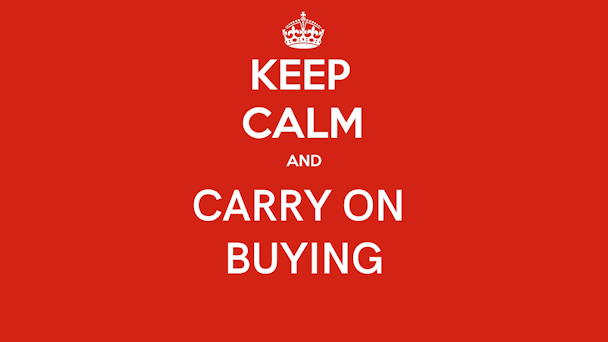Why advertisers should keep calm and (cautiously) carry on despite media inflation
Simon Bevan, chief investment officer, Havas Media Group UK, urges clients not to push the panic button on media pricing – after all, inflation doesn’t mean there’s no ROI.

TV has offered value for money as audiences grew through the digitization of the medium
Some of the media inflation figures being bandied around will make the recent heatwaves seem like a cool breeze. Earlier this year, the World Federation of Advertisers (WFA) predicted linear TV inflation of 19% for 2022 in the UK, following a staggering 41% rise in 2021. Warc Media’s recent Global Ad Trends report echoed this trajectory, revealing that the average linear TV CPMs are already up 30% on 2019 and 9.6% on 2021. Understandable, then, that media inflation is putting a collective massive F into WTF for advertisers.
But while not wanting to come across as dismissive of advertisers’ concerns around significant pricing volatility in the market, I’d not be rushing (yet) to press the panic button. Let’s take a look at TV, which is particularly under the microscope. The reality is that the TV landscape is going through seismic behavior change driven by technological advancements. More importantly, though, high inflation doesn’t necessarily mean there haven’t been nor will be good deals to be had and opportunities to deliver strong ROI – even in these high inflationary times – with some smart choices.
While in everyone’s crosshairs, TV still offers fantastic value for money as it has always done. The dynamic nature of the TV pricing model in the UK means TV has offered value for money as audiences grew through the digitization of the medium. The elasticity in price exacerbated by inflationary pressures we’ve seen in the last 18 months or so hasn’t stopped TV from delivering significant ROI – hence the ongoing demand from advertisers, even though costs have risen.
Meanwhile, it looks like we might now be reaching the peak of TV inflation with looming economic uncertainty potentially dampening demand as supply chains come under increasing cost pressure globally. Further good news is that broadcasters are reacting by thinking differently about how they can encourage spend into the channel. Only this month it was reported that ITV would be offering 20% discounts for its blockbuster live coverage of the 2022 Qatar World Cup starting on November 21.
Elsewhere, other channels have not been exempt from inflationary pressures too – although not to the extent that linear TV has experienced. Even with auctions and more fixed-price models, media owners have had to readdress their pricing models post-pandemic to accommodate the increase in advertiser demand. This has seen structural change to prices across the most highly demanded radio networks, digital audio and cinema rate card reviews across 2022, and out-of-home (OOH) experiencing marginal rate inflation. This has been driven predominantly by the resurgence in transport ad formats, even in the context of ever-expanding inventory through digital format growth.
There are some things we of course cannot change. Fundamentally, the greatest challenge the industry faces is the volatility of linear CPTs, which has been exacerbated by shorter booking deadlines, increased advertiser demand for the channel and the migration of audiences away from linear viewing to on-demand. Inflation is making us all reflect on the spending choices we make as pressures on all supply chains mount, whether as people or businesspeople.
But there’s a lot we can control around the choices we make. Advertisers’ focus would be best placed on brand performance – how will TV, digital or VOD help drive attention, awareness or brand recall? How will one channel complement another? Where are the levers for the greatest ROI? We are working with our clients to find the most effective route to reach audiences, for example across linear, on-demand and connected TV (CTV) ecosystems. I confess we have skin in the game – Domino’s partnerships with ITV Hub and All4 are terrific examples of how we can continue to deliver stronger results through the newer on-demand TV ecosystem.
Inflationary pressures are rightfully making advertisers and their agency partners put their channels under (re)consideration. However, I’d argue that all channels should remain under constant review, and that remains the case whether there’s media inflation or not. In this sense, it’s important not to lose perspective on the long game of what we’re trying to achieve due to (relatively) short-term pressures.
A surefire way to get ahead right now is to view ad formats through the filter of the media experiences they create for consumers and the impact that delivers over the long-term – is this the right content in the right context at the right time?
When viewed like that, TV might not be any less attractive in your media mix than it was three years ago, nor against other formats that have remained stable or are cheaper today. That’s why perhaps the best option for some advertisers, for the time being, might just be to keep calm and (cautiously) carry on.
